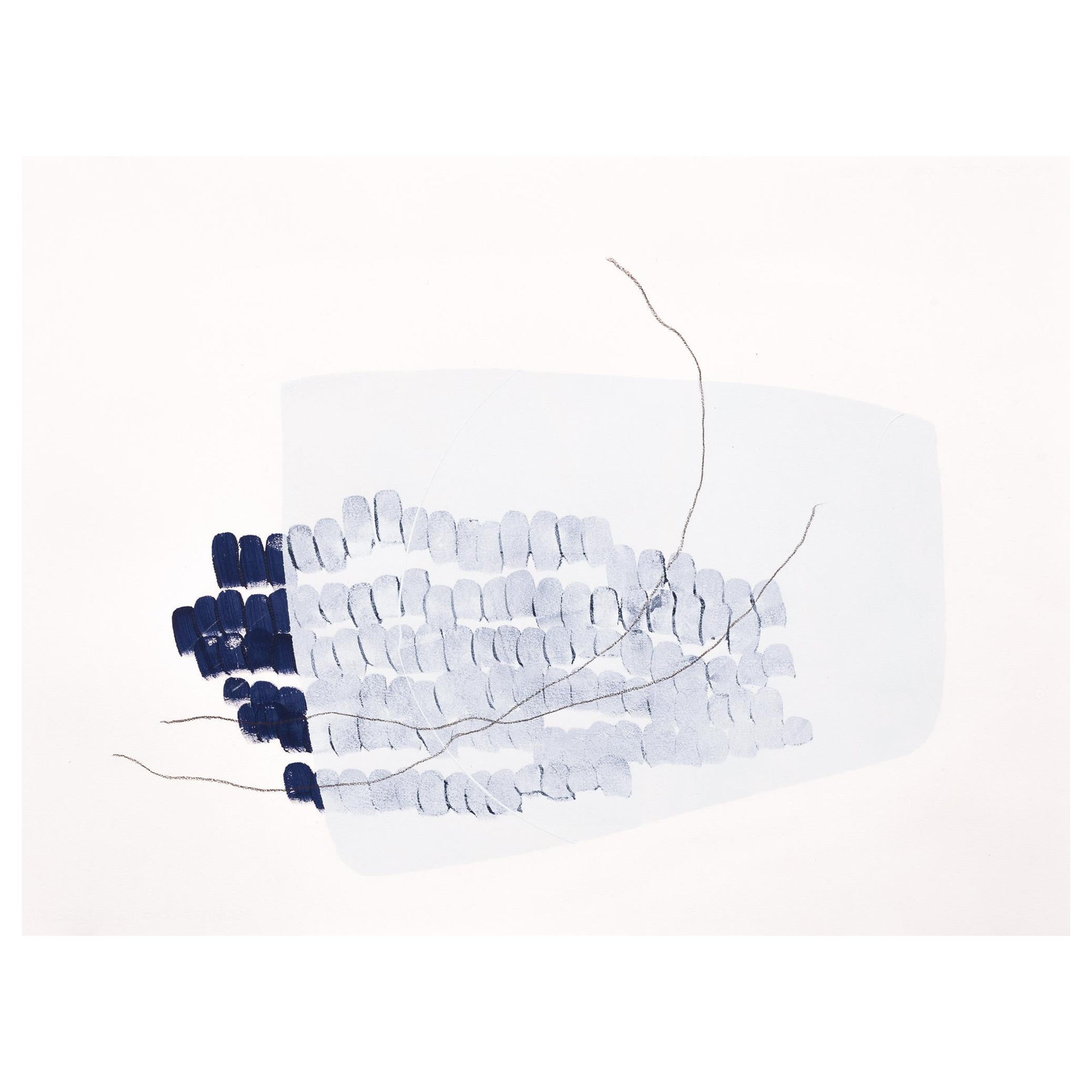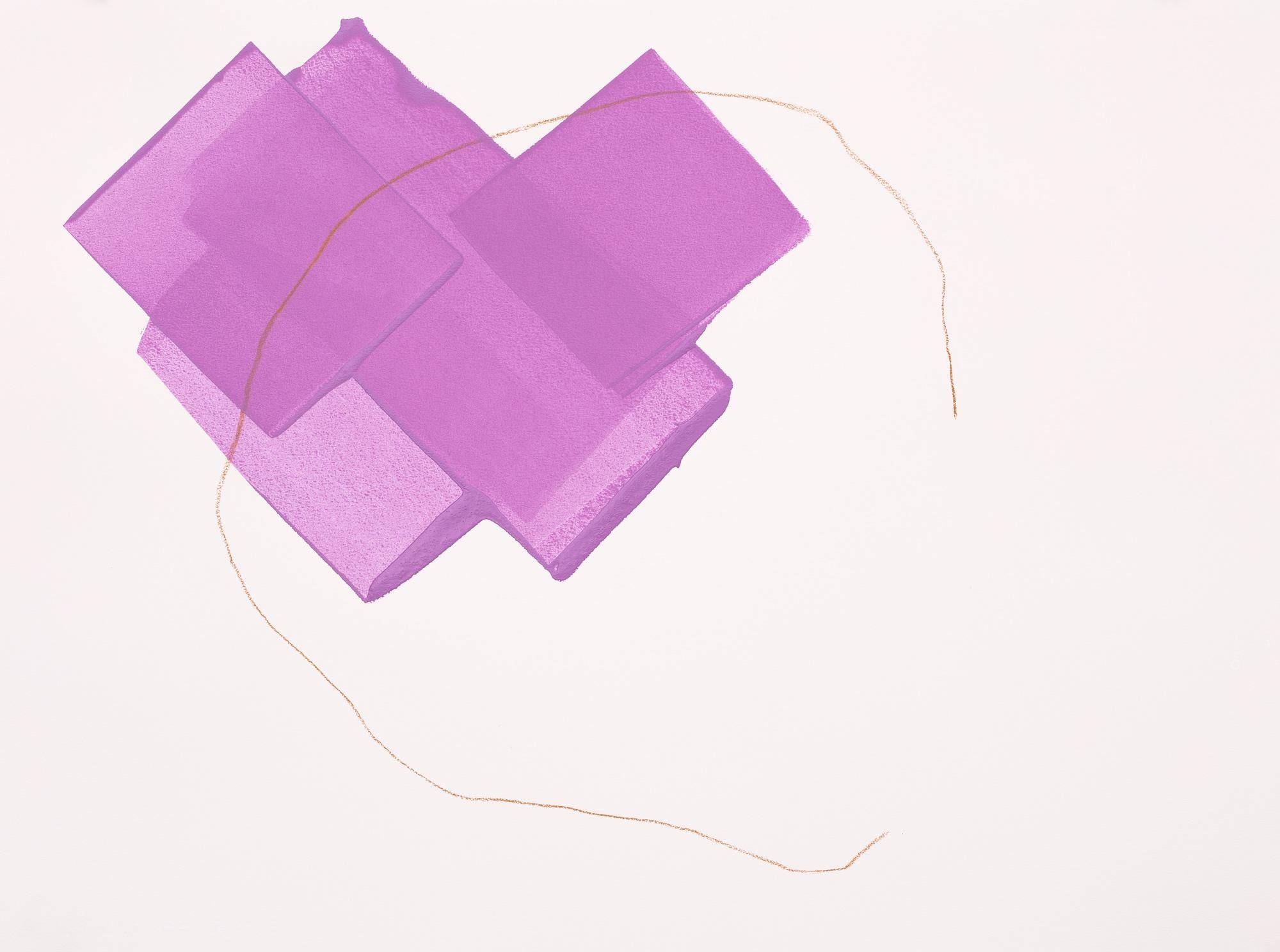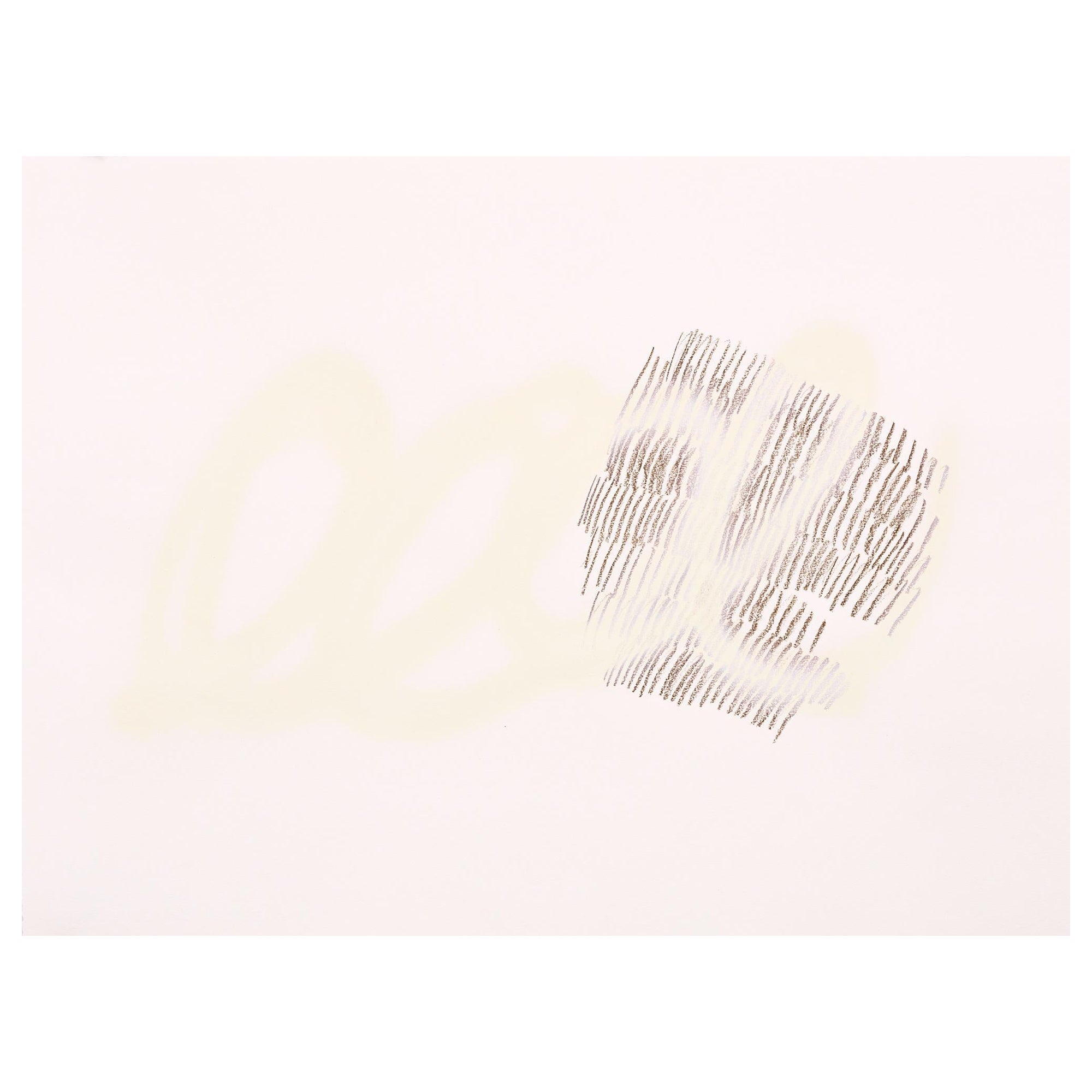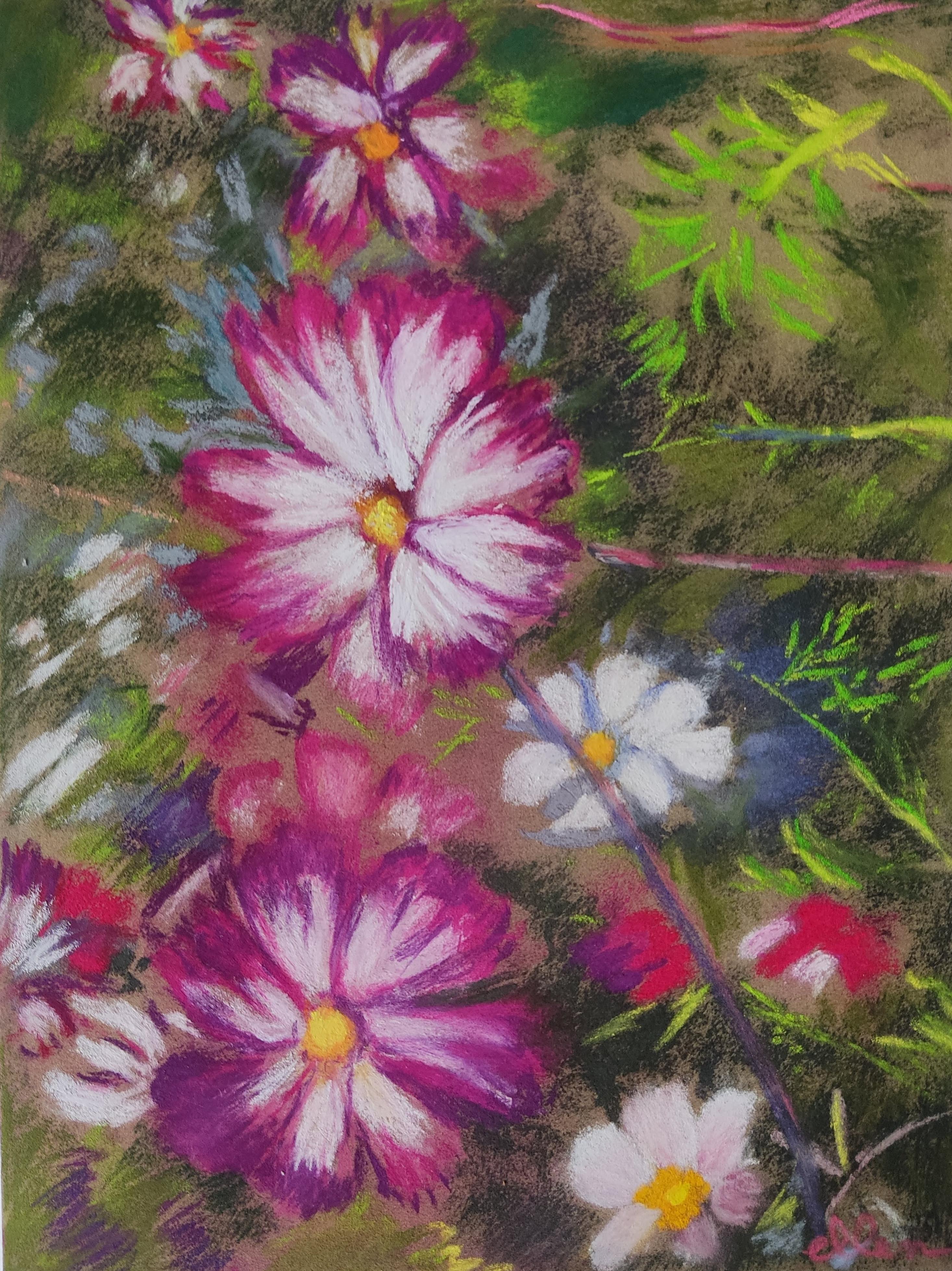Items Similar to "Bloomfield, New Jersey" Oscar Bluemner, American Modernist, Colorist Landscape
Want more images or videos?
Request additional images or videos from the seller
1 of 5
Oscar Bluemner"Bloomfield, New Jersey" Oscar Bluemner, American Modernist, Colorist Landscape1916
1916
About the Item
Oscar Bluemner
Bloomfield, New Jersey, September 13, 1916
Signed, titled, and dated lower left
Crayon on paper
5 x 5 3/4 inches
Provenance:
Fox Gallery, New York
Sheldon Ross Gallery, Birmingham, Michigan
Wendell Street Gallery, Cambridge, Massachusetts, 1986
Private Collection, Washington, D.C. (acquired from the above)
The son and grandson of architects, Bluemner was born in Hanover, Germany, in 1867, and was encouraged to follow in his family's trade. He showed early promise as an artist as well, and his first one-man show of portraits was held at the Berlin Latin School in 1886. In 1892 he won a medal at the Royal Academy of Design in Berlin where he studied painting and architecture. Dissatisfied with the restrictive aesthetic policies of Emperor Wilhelm II's government, Bluemner left for America that same year.
Bluemner arrived in New York, then moved on to Chicago in 1893, hoping to gain architectural commissions at the World's Columbian Exposition. He designed prefabricated units for the Exposition and freelanced as a draftsman. He returned to New York in 1901, and the following year he won a commission for the Bronx Borough Courthouse that his partner finagled away using Bluemner's design. Although Bluemner sued and eventually won the lawsuit, the experience permanently turned him away from architecture. Between 1908 and 1910, Bluemner began painting in earnest, making sketching trips throughout New Jersey and Long Island. In 1910, the year he "kicked the building business over," he met Alfred Stieglitz, who sparked his interest in the artistic innovations of the European and American avant-garde. Bluemner painted his first oil in 1911.
In 1912 Bluemner sailed for Europe, where he had a one-man show of landscapes at the Gurlitt Galleries in Berlin. After Berlin, he traveled to Paris and Italy where he saw the work of Matisse, Cézanne, and the Futurists, and created thousands of sketches inspired by the museums he visited. Stopping over in England, Bluemner toured Roger Fry's Post-Impressionist exhibition at Grafton Galleries and became fully committed to the modernist ideology.
Upon his return to the United States, Bluemner contributed one landscape to the 1913 Armory Show and wrote an article defending modernism for Stieglitz's progressive publication Camera Work. The ongoing connection with Stieglitz had a significant impact on Bluemner's career—in 1915 Stieglitz gave him a solo exhibition at his gallery, 291. Bluemner's paintings of this period were tightly structured compositions in the Cubist manner blazing with Fauve-inspired reds, oranges, and contrasting hues. Bluemner exhibited in the 1916 Forum Exhibition and regularly at the Bourgeois Gallery (artist George Of introduced him to proprietor Stephan Bourgeois, who remained a lifelong friend). He also showed at the Montross Gallery, mainly exhibiting intensely colored oils synthesizing abstract and concrete form that were based on earlier sketches of New Jersey countryscapes and factories. Stieglitz continued to support him and gave him a solo show in 1928. The following year Bluemner had a one-man exhibition at the Whitney Studio Galleries.
Bluemner was fascinated with the formal, emotional, and spiritual qualities of strong color. He dubbed himself the "Vermillionaire" in reference to his reliance on bright red hues for his houses and barns. He explored his color theories in angular, brightly colored landscapes, abstracted from nature. As his career progressed, Bluemner found inspiration in classical music and Freudian concepts of the subconscious. His late compositions in oil or casein, on which he often bestowed titles alluding to music, became more abstract, displaying heightened emotional content, simplified masses, and pulsating color.
After his wife's death in 1926, Bluemner moved to South Braintree, Massachusetts, to live in virtual seclusion. He continued to paint and exhibit until he was involved in an auto accident and told he could never paint again. Bluemner died by his own hand on January 12, 1938.
Underappreciated and financially impoverished during his lifetime, Bluemner is today the object of renewed critical and public interest. In 2005-06, his career was the subject of a major retrospective, "Oscar Bluemner: A Passion for Color," organized by the Whitney Museum of American Art, New York. Bluemner is represented in private and public institutions, including the Metropolitan Museum of Art, New York; the Museum of Modern Art, New York; the Phillips Collection, and the Corcoran Gallery, both in Washington, D.C.; the Montclair Art Museum, New Jersey, and the Amon Carter Museum of Western Art, Texas.
- Creator:Oscar Bluemner (1867 - 1938, American)
- Creation Year:1916
- Dimensions:Height: 11 in (27.94 cm)Width: 11.5 in (29.21 cm)
- Medium:
- Period:
- Condition:
- Gallery Location:New York, NY
- Reference Number:1stDibs: LU1841213812662
About the Seller
5.0
Platinum Seller
These expertly vetted sellers are 1stDibs' most experienced sellers and are rated highest by our customers.
Established in 2021
1stDibs seller since 2022
59 sales on 1stDibs
Typical response time: 1 hour
- ShippingRetrieving quote...Ships From: New York, NY
- Return PolicyA return for this item may be initiated within 3 days of delivery.
More From This SellerView All
- "Tokyo Diptych, " Yvonne Jacquette, Japanese Urban Cityscape Nocturnal AerialBy Yvonne JacquetteLocated in New York, NYYvonne Jacquette (American, b. 1935) Tokyo Diptych, 1985 Pastel on paper Overall 17 1/4 x 28 1/2 inches Signed lower center Provenance: Carey Ellis Company, Houston, Texas Brooke Alexander, New York Collection of an American Corporation Exhibited: New York, Brooke Alexander, Yvonne Jacquette: Tokyo Nightviews, April 5 - May 3, 1986, n.p., illustrated; this exhibition later traveled to Brunswick, Maine, Bowdoin College Museum of Art, Yvonne Jacquette: Tokyo Nightviews, June 27 - August 24, 1986. Yvonne Jacquette has a preference for high places, a circling plane, a penthouse window, an aerie from which to watch the world. Her work has often depicted the city and man-made landscape from the vantage of angels. It is a privileged perspective, long loved by photographers, who were perhaps the first to recognize the geometric grandeur of the city below. That grandeur structures Jacquette's images but is not its full content. Her work attempts to resolve the visual and emotional pardoxes of the modern metropolis. Only from the tower is there the possibility of order and context. And unlaced beauty. Jacquette first visited Japan in 1982. Nighttime Tokyo, its cars and crowds and canyons of loud Vegas neon, made a vivid and bewildering impression on her. The neon signs, pulsing, scaling the walls of high rises, fascinated the artist, "like Times Square spread over miles." Her fascination was equal parts marvel, confusion, and curiosity—the sparks of art. She returned to Tokyo in May of 1985, choosing hotel rooms with expansive vistas. From these views Jacquette excerpted images for a series of pastel night scenes. The basic forms and colors of each drawing were blocked in during night sessions by the window. She worked in the dark, selecting colors by flashlight. In daylight, she sharpened the geometry and corrected ambiguous passages. She refined the drawings further in the studio until the images read clearly. Photographic correctness was not important. The finished drawings are complete statements, not simply preparatory sketches for paintings. They have the authority of expert witness. In clear, discreet jots of pastel they record the performance of seeing, each touch of color attesting to a moment's close scrutiny. Yvonne Jacquette was born on December 15, 1934 in Pittsburgh, Pennsylvania and grew up in Stamford, Connecticut. She attended the Rhode Island School of Design, Providence from 1952 to 1955, when she moved to New York City. Her late husband was photographer Rudy Burckhardt, and the couple were part of a circle of artist friends that included Fairfield Porter, Alex Katz, Red Grooms, and Mimi Gross. She continues to live and work in New York City, as well as in Searsmont, Maine. A flight to San Diego in 1969 sparked Jacquette’s interest in aerial views, after which she began flying in commercial airliners to study cloud formations and weather patterns. She soon started sketching and painting the landscape as seen from above, beginning a process that has developed into a defining element of her art. Her first nocturnal painting...Category
1980s American Modern Landscape Drawings and Watercolors
MaterialsPaper, Pastel
- "New York City Harbor (Brooklyn Bridge), " Leon Dolice, East River, Mid-CenturyBy Leon DoliceLocated in New York, NYLeon Dolice (1892 - 1960) New York Harbor (Brooklyn Bridge), circa 1930-40 Pastel on paper 12 x 19 inches Signed lower right Provenance: Spanierman Gallery, New York The romantic b...Category
1930s American Modern Landscape Drawings and Watercolors
MaterialsPaper, Pastel
- "New York Yankees World Series Celebration, " Kamil Kubik Baseball Street ParadeBy Kamil KubikLocated in New York, NYKamil Kubik (1930 - 2011) The New York Yankees 1998 Baseball World Series Celebration, 1998 Pastel on paper Sight 26 x 19 1/2 inches Provenance: The artist's estate The 1998 New York Yankees were one of the best baseball teams ever, comprising players such as Jorge Posada, Tino Martinez, Chuck Knoblauch, Scott Brosius, Derek Jeter...Category
1990s Post-Impressionist Landscape Paintings
MaterialsPaper, Oil Pastel
- "New York City Harbor" Leon Dolice, Downtown Skyline, East and Hudson RiverBy Leon DoliceLocated in New York, NYLeon Dolice (1892 - 1960) New York Harbor Skyline at Twilight (Searching), circa 1930-40 Pastel on paper 12 x 19 inches Signed lower left Provenance: Spanierman Gallery, New York T...Category
1930s American Modern Landscape Drawings and Watercolors
MaterialsPaper, Pastel
- "Hydrangeas, " Walter Inglis Anderson, Mississippi Southern Illustrator, FlowersLocated in New York, NYWalter Anderson ( American, 1903 - 1965) Hydrangeas, circa 1950 Mixed media on paper 11 x 8 1/2 inches Provenance: Luise Ross Gallery, New York Private Collection, New Jersey Acquired from the estate of the above, 2021 Walter Anderson firmly believed that quality art was an important part of life and should be made available to everyone. As he said, "There should be simple, good decorations, to be sold at prices to rival the five-and-ten." Noticing that only poor quality art was available in stores and little was available for children, he resolved to make art which could be reproduced easily and sell inexpensively — linoleum block prints. This technique enabled him to provide affordable, quality art. The technique of linoleum block printing is a simple concept; however, it requires much skill and talent to actually produce memorable art. Anderson purchased surplus "battleship linoleum," thicker than ordinary linoleum with a burlap backing for better support, to create his blocks. During the mid-1940s, he created almost 300 linocuts working in the attic of the sea-side plantation house, Oldfields, his wife's family home in Gautier. Masses of linoleum chips accumulated at the foot of the attic stairs as he often worked night and day. He began with sketching out a design directly on the linoleum. Once he had carved the image into the surface, he used the back of faded, surplus stock wallpaper that a friend sent him, laying long strips on top of the inked linoleum. A roller made of sewer pipe filled with sand served as his press. When the print was completed, he often colored it by hand with bold strokes and vivid colors. The prints were sold at Shearwater Pottery, the family business, for a mere dollar a foot. But "what about a well-designed fairy tale for a child's room?" he asked himself. Since there was a lack of affordable art for children, much of his work with linoleum blocks focused on subjects for children. He depicted fables and fairy tales ranging from Arabian Nights, to Germany and the Grimm Brothers' Rapunzel, to the French story of The White Cat, to the Greek tales such as Europa and the Bull, and to tales from China, India, and other cultures. Anderson also created "mini" books featuring the alphabet and Robinson Cat. The blocks are not only alive with the story being depicted, but they are also filled with designs taken from Best-Maugard's Method for Creative Design. Swirls, half-circles and zig-zag lines fill every available space on the linoleum block making them come alive and capture their audience. But fairy tales, children's verses and the "mini" books, consisting of about 90 blocks, were not the sole subject of Anderson's linoleum block prints. In total, he created approximately 300 linoleum blocks with subjects ranging from coastal flora and fauna, coastal animals, and sports and other coastal activities. Anderson even created linoleum blocks to be used to print tablecloths and clothing, some worn by his own children. Color and subjects of the linoleum block prints were not the only things that got them noticed. In 1945 when Anderson was creating these prints, the standard size of linoleum block prints was only 12 by 18 inches. These small dimensions were due to the common size of the paper available and the restrictions made by national competitions. Since Anderson used wallpaper...Category
Mid-20th Century American Modern Landscape Paintings
MaterialsPaper, Crayon
- "Building" George Luks, Cityscape, Ashcan School, Gothic CathedralBy George LuksLocated in New York, NYGeorge Luks Building Signed lower right Black crayon on paper Sight 8 1/4 x 5 1/2 inches Provenance: M. Knoedler & Co., New York Foster Brothers, Boston Joan Peterson Gallery, Bosto...Category
Early 20th Century Ashcan School Landscape Drawings and Watercolors
MaterialsPaper, Crayon
You May Also Like
- "Frozen Tracks in Snow", contemporary abstract landscape acrylic & crayon, paperBy Mel ReeseLocated in Brooklyn, NYAn acrylic and caran d'ache abstract drawing of the moment in the season when it is so crips and quiet that your shoes make clear tracks frozen in the snow. This drawing was produce...Category
2010s Abstract Abstract Drawings and Watercolors
MaterialsOil Crayon, Acrylic, Archival Paper
- "Purple Fall", contemporary abstract winter landscape acrylic & crayon on paperBy Mel ReeseLocated in Brooklyn, NYAn acrylic and caran d'ache abstract drawing of that special, soft purple light that shimmers on the snow at sunset in winter. This drawing was produced during my November 2017 resi...Category
2010s Abstract Abstract Drawings and Watercolors
MaterialsOil Crayon, Acrylic, Archival Paper
- "Snow Blanket", contemporary abstract winter landscape, spray & crayon on paperBy Mel ReeseLocated in Brooklyn, NYA spray paint and caran d'ache abstract drawing of the blanket of snow that gently lays upon the leaves and sticks in Johnson, Vermont. This drawing was produced during my November ...Category
2010s Abstract Abstract Drawings and Watercolors
MaterialsSpray Paint, Archival Paper, Oil Crayon
- "Icy Fog", contemporary abstract landscape, acrylic, crayon & spray on paperBy Mel ReeseLocated in Brooklyn, NYAn acrylic, caran d'ache, and spray paint abstract drawing of that moment in winter when the air becomes so bitter cold that it almost seems to freeze around you. This drawing was p...Category
2010s Abstract Abstract Drawings and Watercolors
MaterialsOil Crayon, Spray Paint, Acrylic, Archival Paper
- Jardin d'été, Original Drawing, Pastel, Summer Garden, PoolLocated in AIX-EN-PROVENCE, FRPastel and Coloured Pencils on Hahnemühle paper 300g - Summer Garden, Pool, Drawing, Pastel Work Title : Jardin d'été (EN : Summer Garden) Artist : Gabriel Riesnert (French artist, B...Category
21st Century and Contemporary Contemporary Landscape Drawings and Waterc...
MaterialsPastel, Archival Paper, Color Pencil
- Garden Flowers, Original Pastel Drawing, Color, France, ImpressionismLocated in AIX-EN-PROVENCE, FRWork : Soft Pastel on archival and heavy paper for pastel drawing. The colors are fixed on the paper and the work has been treated with a UV-resistant varnish. Signed lower right. Un...Category
21st Century and Contemporary Impressionist Landscape Drawings and Water...
MaterialsPastel, Archival Paper
Recently Viewed
View AllMore Ways To Browse
1950s Dior Bag
Burton Morris Painting
Charles Dewey
Keith Haring Catalogue 1982
Ludwig Wolpert
Oranges By Donald Sultan
Slim Aarons Snowmass Picnic
Alfred Jarry
Rogers Williams
Simone Geraci Etchings
Vivien Maier
African Ritual Statue
Brett Anderson
Howard L Rich
Jeff Joyce
Nina Ricci Hats
Old Rotary Telephones
Pair Of Rose Impressionist Oil Paintings





